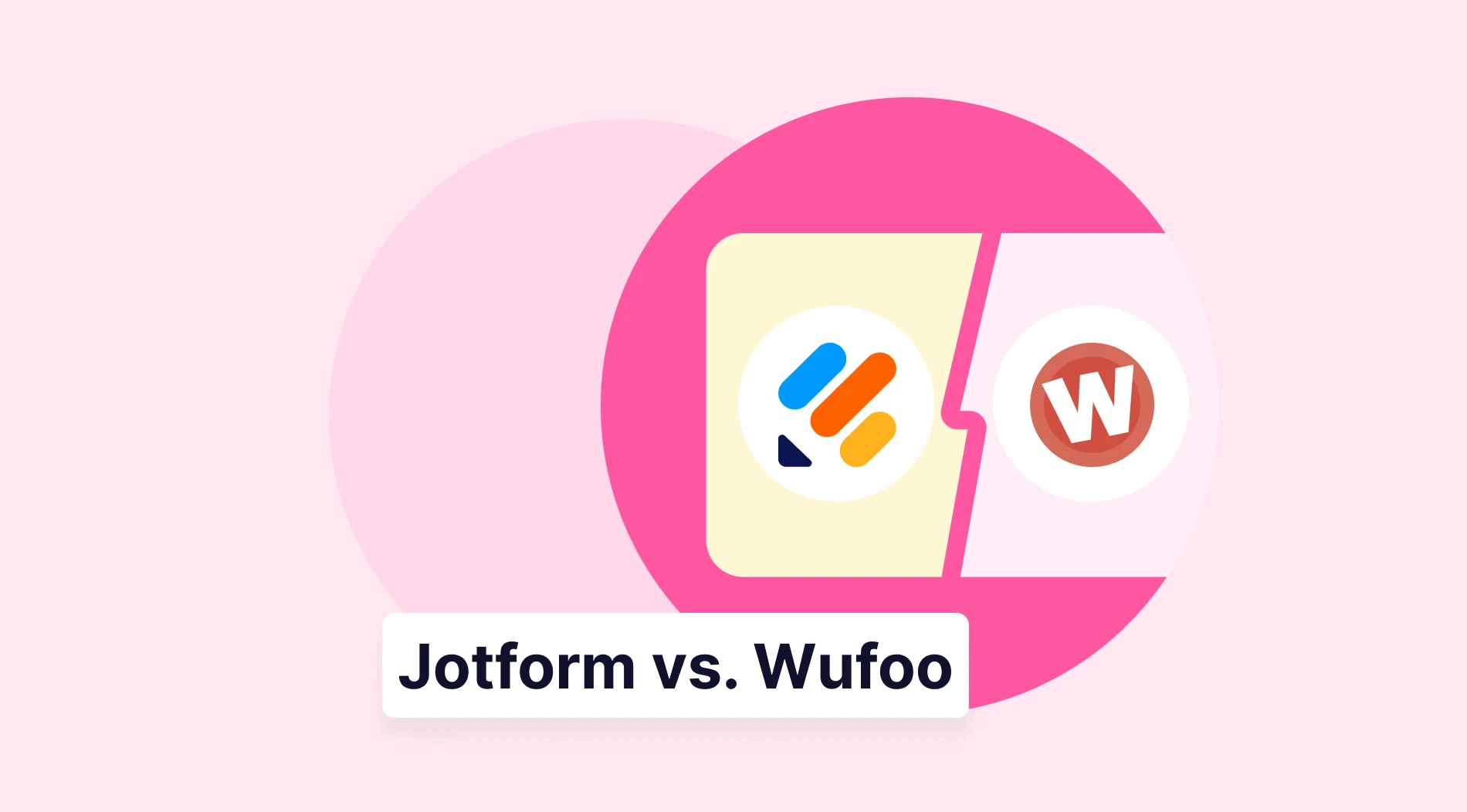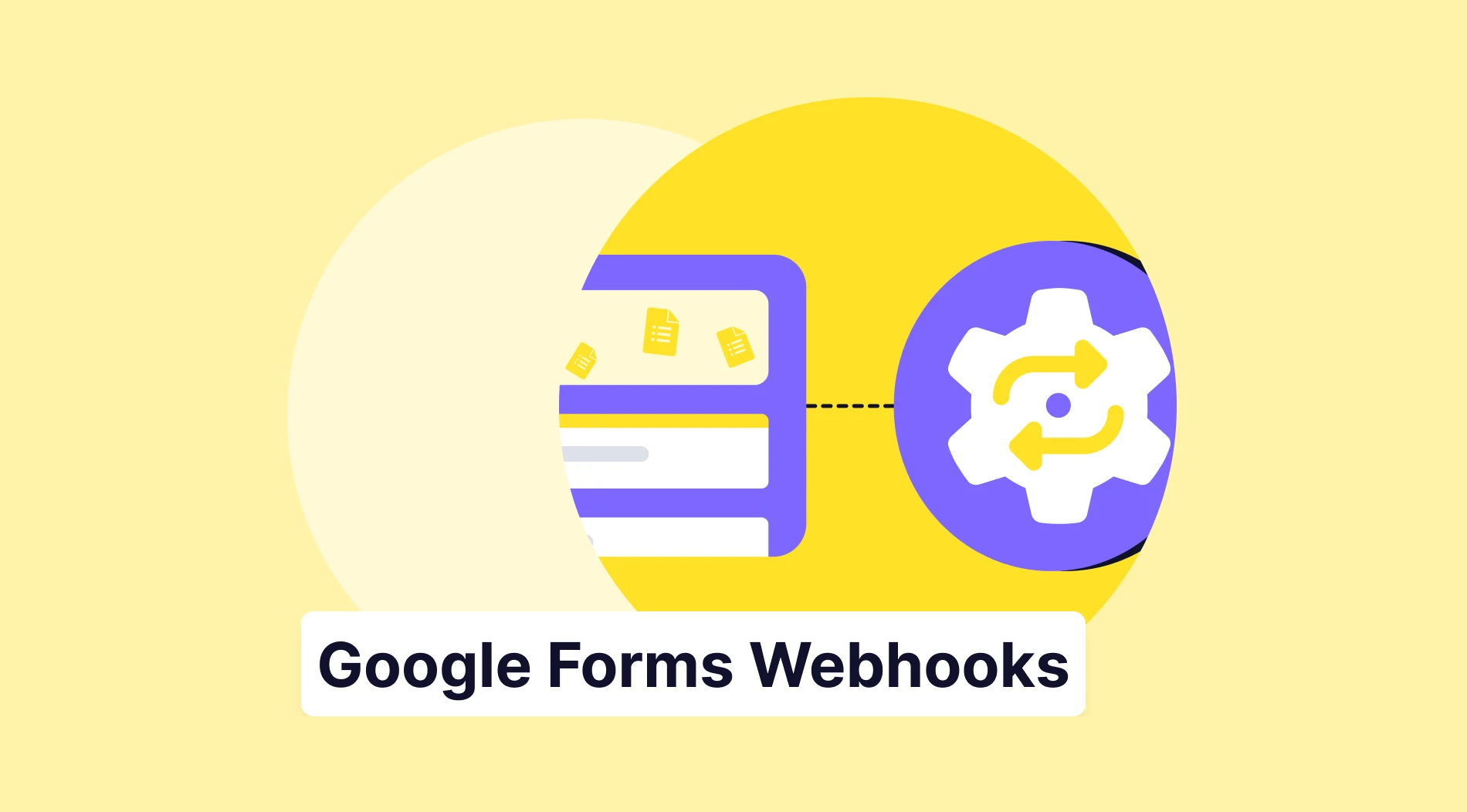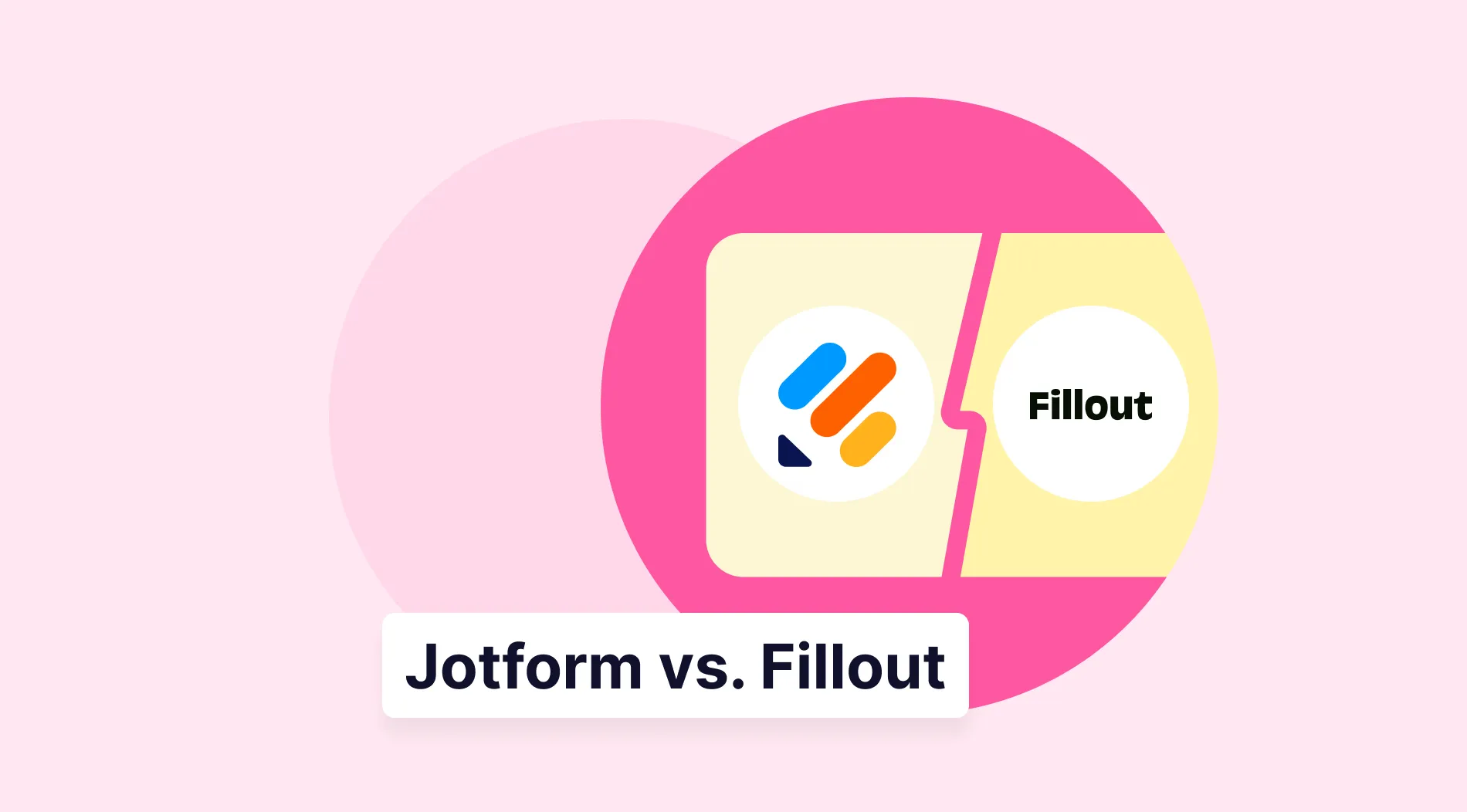One of the things that hurt the accuracy of a survey is asking the wrong questions. If your purpose is to find out the truth about something and to make changes to the data, you should avoid leading questions. But what is a leading question?
In this article, we explain different types of leading questions, give examples in different industries, and answer the most frequently asked questions for you. Let us get started with the definition of leading questions.
What is a leading question?
A leading question is a type of question that is written with specific implications to make respondents answer in a certain way.
Leading questions, often written with emotionally charged language, may influence the survey results. If you are asked a question framed in a way, “You like this, don’t you?” it is a leading question. The question assumes the respondent agrees with whatever is suggested.
Survey makers can intentionally or unintentionally use leading questions to achieve a desired answer, but either way, this approach will produce biased responses. You should avoid leading survey questions to ensure the data reliability.
5 Types of leading questions
Leading questions can be divided into different groups by their intent, objective, and framing. Knowing the details about these different types of leading questions will make it easier to identify or avoid leading questions.
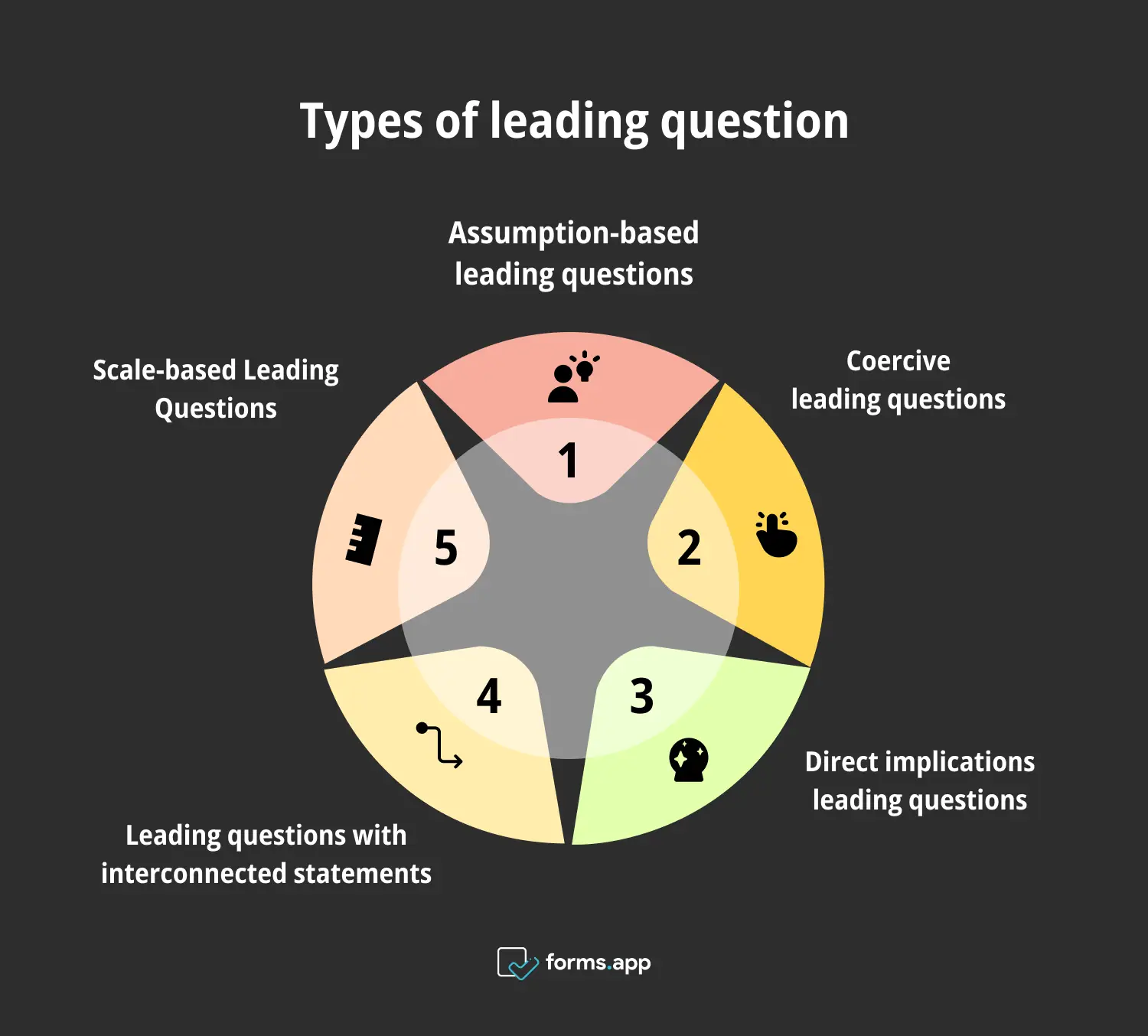
Leading question types
1. Assumption-based leading questions
Assumption-based leading questions are written with a preconceived idea. The survey creator assumes the survey taker already has positive feelings about whatever service is presented to them. And that, though, is clearly implied in the question. For instance, the question “How much did you enjoy our new product?” assumes that the respondent enjoyed the product.
Assumption-based leading questions are mostly used in feedback surveys when the survey creator wants to assess the respondent’s perception of a product or a service. The objective of this kind of question is to test that assumption.
2. Coercive leading questions
Coercive leading questions are written in a way that forces respondents to answer in a certain, usually affirmative, way. They provide their opinion in the form of a question and expect survey takers to confirm that opinion. This question type is not as subtle as the other types.
Coercive leading questions use suggestive language or framing to manipulate the outcome of a survey or interview. Such questions jeopardize the credibility of the survey. For instance, “Everyone else found our service exceptional, do you?” pushes the respondent to conform to that view.
3. Direct implications leading questions
Writing leading questions with direct implications means you aim to focus respondents on the likelihood of a future event happening. This question type subtly suggests a future event will likely happen, which may influence the respondent’s answer.
Implication questions are usually phrased as “Once you upgrade to the premium plan, how much more value do you expect to get?” This question implies that the respondent will start using the new software no matter what.
4. Leading questions with interconnected statements
Leading questions with interconnected statements include a statement about an opinion or a fact and ask a framed question about that statement. The question implies that there is a particular connection between the two.
It is useful to measure if the respondents agree with the statement made, but if it is not done correctly, it might reduce the clarity of your question. The question, “Since you liked our app, you are excited about the new update, right?" is a good example of this type of leading question.
5. Scale-based leading questions
Scale-based leading questions are a type of leading questions in surveys where the scale is structured in a way that influences the way people answer the question. In the leading questions, the scale may be unbalanced, with more positive options than negative ones. Here is an example of a scale-based leading question:
"How much do you love our product?"
multiple choice scale options:
a) Absolutely love it
b) Love it a lot
c) Like it
d) It’s okay
This question and the answer options imply that the respondent should have positive feelings about the product and provide no negative options for dislike.
6 Examples of leading questions
Here, we gathered leading questions and examples to give you a better idea of the subject. In some cases, you may want to use a leading question if you want to get a particular answer. However, if you need unbiased and clear feedback to improve your organization or business, you should try to avoid them.
Let us look at some examples of leading questions in various roles and industries:
A. Leading questions in law
Question 1: "You saw the defendant at the scene of the crime, didn’t you?"
This question implies the witness must have seen the defendant at the scene of the crime, and wants them to confirm this fact. This is a direct implication leading question.
Question 2: "You were present at the meeting; therefore, you must have heard the defendant make the controversial statement, right?"
This question states that the person was in the meeting and then directly assumes that being present at the meeting must mean that they have heard what was said there. This is an assumption-based leading question.
B. Leading questions in research
Question 3: “Since you agree that our findings align with previous research, wouldn’t you say our conclusions are highly reliable?”
This question tries to lead the respondent to confirm both statements by linking the alignment of findings to the research being reliable. It is an example of leading questions with interconnected statements.
Question 4: “Given that our recent study showed positive results, don’t you think our research methods were effective?”
The survey taker wants the respondent to affirm the implication that the research methods must have been effective as they yielded positive results. This is one of the leading questions with direct implications.
C. Leading questions in Sales
Question 5: “You were pleased with our previous sales service, so you’re planning to buy from us again, aren’t you?"
This question makes a connection with the fact that the client liked the previous sales experience and therefore, must make another purchase in the future. It is a leading question with an interconnected statement.
Question 6: “Since our latest promotion offered such a great deal, you must have taken advantage of it, right?"
The question above asks the respondents to answer if they have used the deal while directly implying that it was a great one. So, this question aims to get people to confirm both statements at the same time. This is a leading question with a direct implication.
Why should you avoid leading questions?
If you value the clarity and accuracy of the data you collect, your questions should not be written to result in a specific way. If you are the respondent of some questions, you can try to avoid leading questions by knowing how to identify them. The other reasons why you should avoid leading questions are:
💡They create bias: Leading questions may reduce the accuracy of the data by creating bias.
💡They compromise the data quality: The answers received by asking leading questions are often unreliable and lack validity.
💡They are bad for trust: If respondents feel that they are being cornered by the way the questions are phrased, they may lose trust in the survey process.
💡They violate ethical standards: As they manipulate the results of a survey, using leading questions is unethical.
How can you make sure your questions are not leading?
When you are creating a survey or questionnaire, you should avoid writing leading questions. Unless you want to compromise the integrity and accuracy of the survey. Because, only then you can have accurate and unbiased results to make proper adjustments. Let us see some leading question examples and how to rewrite them to be neutral and clear:
- Example in sales and what to avoid: Avoid making assumptions and frame the question neutrally, allowing the respondent to express their true feelings.
❌ Since our product saved you time, don’t you think it’s worth the investment?
✔️ How do you feel about the value of our product in relation to the time it saved you?
- Example in marketing and what to avoid: Avoid presuming the outcome of the previous campaign, let the respondents form their opinion by comparing the two campaigns.
❌ Given the success of our last campaign, don’t you think this one will be even more effective?
✔️ How do you expect this campaign to perform compared to our last one?
- Example in surveys and what to avoid: Avoid generalizing opinions and focus only on the respondent’s personal experience.
❌ Most people found our service helpful, don’t you agree?
✔️ How helpful did you find our service?
- Example in customer service and what to avoid: Avoid suggesting agreement. Remove any language that implies the respondent should feel a certain way.
❌ You were satisfied with how quickly we resolved your issue, right?
✔️ How satisfied were you with the time it took to resolve your issue?
- Example in human resources and what to avoid: Avoid making assumptions about the quality of the training and remove implications.
❌ As the training program was comprehensive, do you feel well-prepared for your role?
✔️ How well-prepared do you feel for your role after completing the training program?
- Example in healthcare and what to avoid: Avoid implied positivity and use neutral language.
❌ You found the new teaching method more engaging, didn’t you?
✔️ How engaging did you find the new teaching method?
Frequently asked questions about leading questions
You might have more questions about a leading question that was not included above. Here, we answered some of the most asked questions when it comes to leading questions. Take a look at them to make the subject clearer to you.
When you are provided with some questions that ask for your opinion, you need to consider carefully to find out if they are leading toward a specific answer. Rather than being influenced by the way the question is written, try to form your honest opinions.
If they ask you, “You think our service is excellent, don’t you?” you can reframe the question in your head and answer if you like it or not. You can also ask them for clarification or point out the bias in the language of the question.
Both the leading questions and loaded questions are biased, and they mislead responses. However, leading questions do that gently, while loaded questions trap the respondents in a difficult position. Loaded questions make it difficult to answer the negative assumption without agreeing to it. For example:
Leading question: Since our team worked so hard, you agree the project was a success, right?
Loaded question: Why did you let the project fail despite the team’s hard work?
The goal of a leading question is to have respondents answer questions in a desired way. This is often done by framing the question accordingly. It does not fully allow the participants to respond freely. Here are the key objectives of the leading questions:
- Leading questions are intended to generate a specific response.
- Leading questions are to be used to confirm or reinforce an assumption.
- Leading questions can be used to influence the opinions and perceptions of respondents.
When you want to collect accurate data from your target audience, you can do that by creating an online survey. It is possible to easily do that by using a survey maker, such as forms.app. forms.app has more than 5000 ready-to-use templates and a lot of effective features. Let us see how to easily create one.
1. Go to forms.app and log in
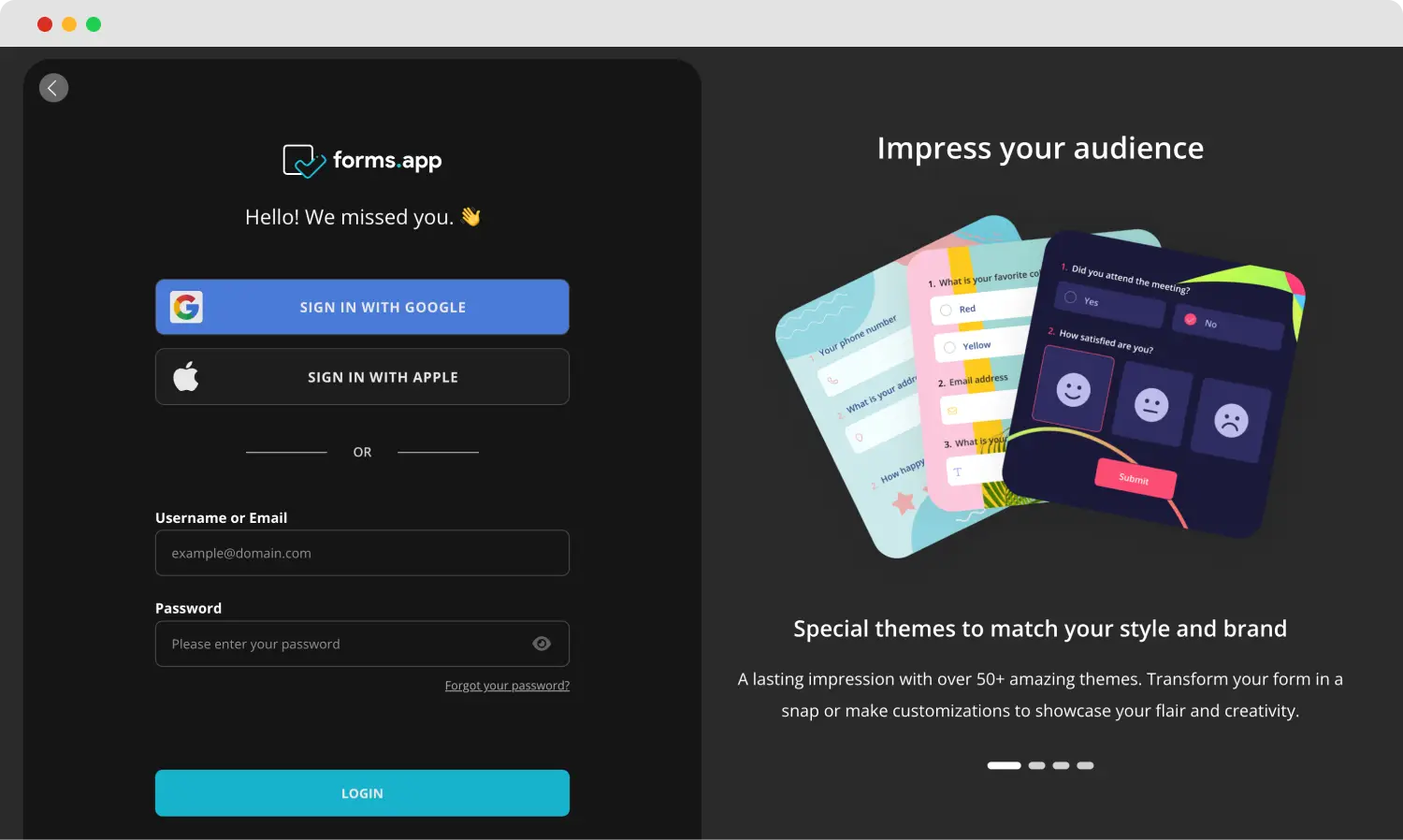
Log in your forms.app account
Go to forms.app and log into your account. If you do not have an account, easily create one. You can find the templates and choose the best one for you, such as one of the feedback surveys. You can also start from scratch or use the AI feature of forms.app. You can give it a prompt, saying, “Give me a client feedback survey,” it will build the survey for you in seconds.
2. Customize the survey
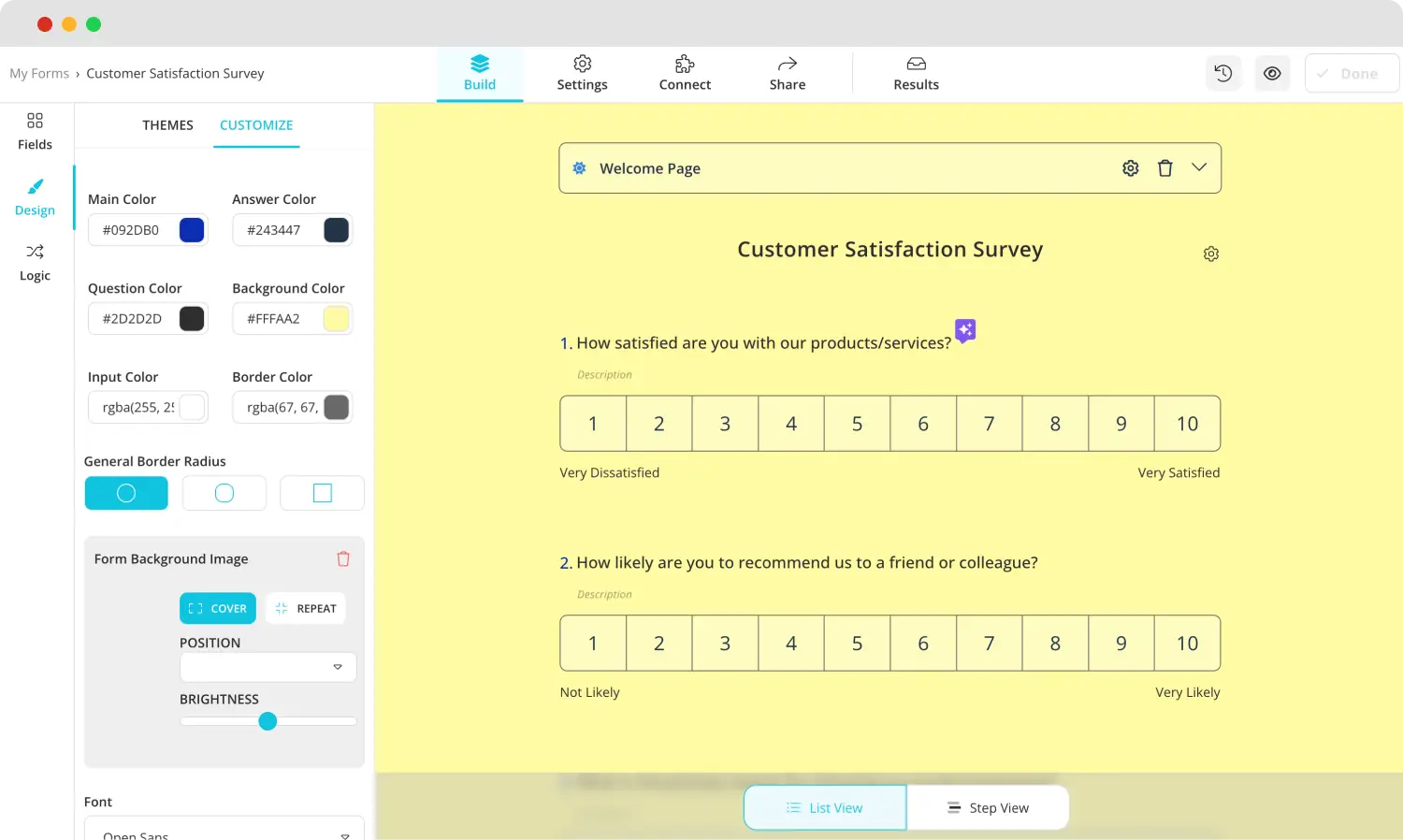
Design your survey
The next step is to customize the survey however you can. You can add or delete questions. It is also possible to change the background, fonts, and colors, add images, etc. There are many features you can customize.
3. Share your survey with your audience
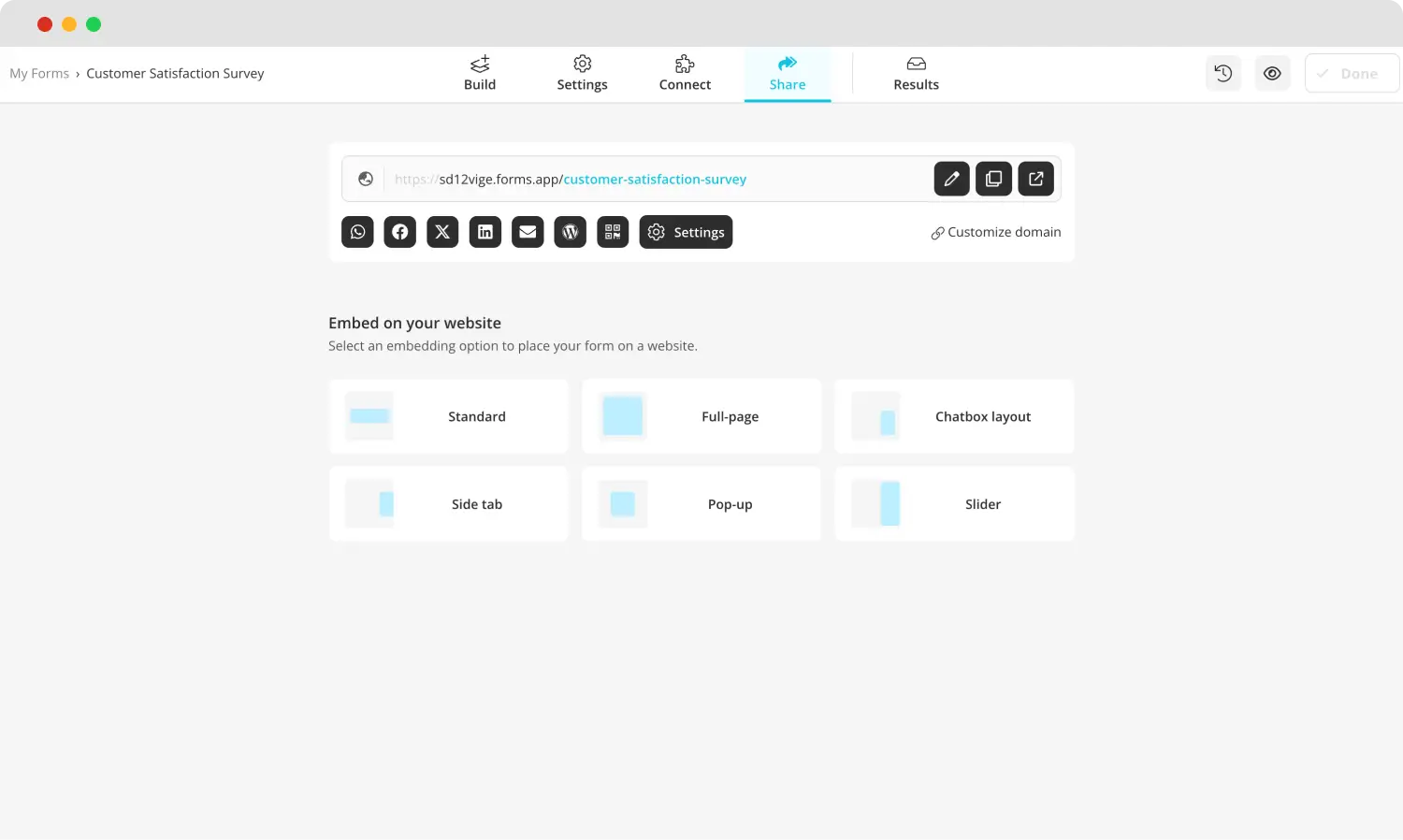
Share your survey
Once you are satisfied with all the changes, it is time to share it. You can copy the unique link of the survey and share it online. Make sure to test the survey to see if there are any errors before sharing it.
Final words
Leading questions may be used to influence the respondents and guide them toward your assumptions about an issue. But, they may also hurt the integrity and accuracy of a survey or interview. It is mainly up to you to ask that question.
That is why we gathered leading question examples and explained different types to help you identify and avoid using them when you want actual results. Good luck with your next survey or interview!
Defne is a content writer at forms.app. She is also a translator specializing in literary translation. Defne loves reading, writing, and translating professionally and as a hobby. Her expertise lies in survey research, research methodologies, content writing, and translation.

